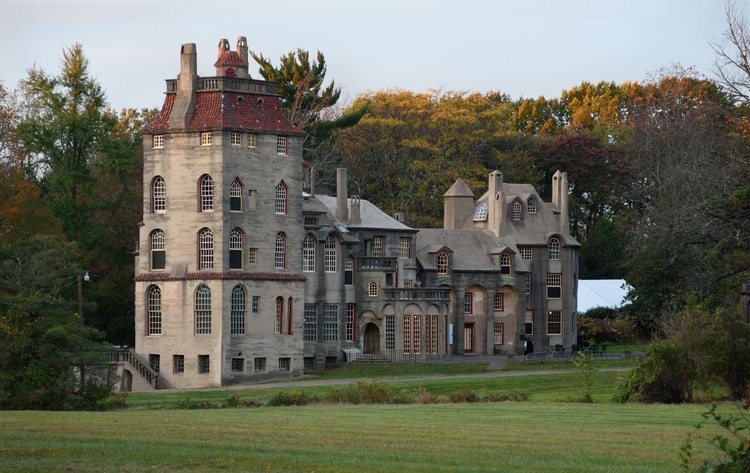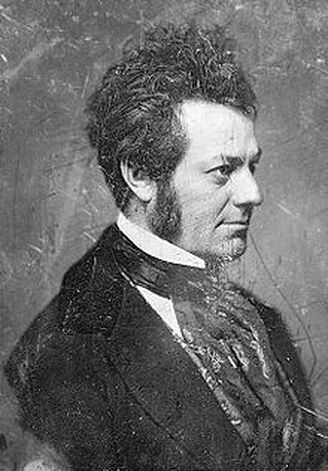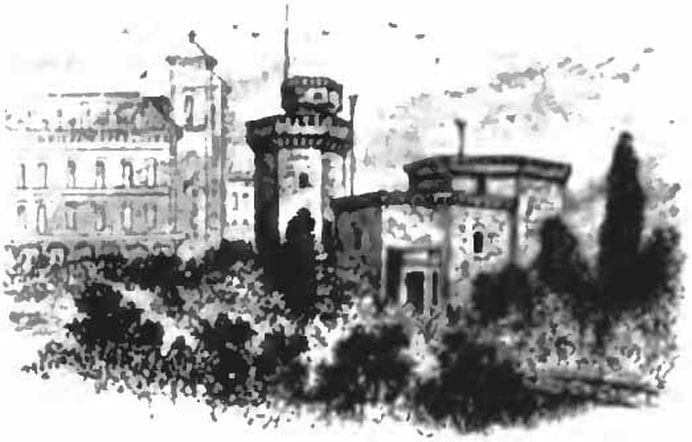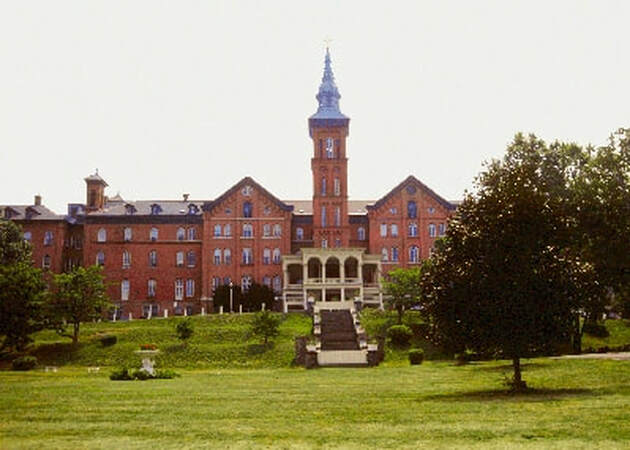|
The Bronx is home to twelve colleges, four of which have NYC Landmarks and/or buildings listed on the National Register of Historic Places found on their respective grounds. With such an enormity of structural treasures right in our own backyard, enjoying a close up and personal visit is easy for Bronx history buffs like myself! The College of Mount St. Vincent has two NYC Designated Landmarks, both of which, date back to the 1850’s. Located in Riverdale, the 70-acre, urban College of Mount St. Vincent is home to Fonthill Castle and the Administration Building, two landmarked historic buildings. To fully understand the significance of these celebrated national historic structures, let’s take a step back in time to examine the foundation of the college on whose grounds they reside. Founded by the Sisters of Charity of New York, and serving over 1,800 students with professional undergraduate programs, the college is under the care of the Sisters of Charity of New York, one of several Sisters of Charity congregations that trace their lineage back to Saint Elizabeth Ann Seton, who established the order in the spirit of Saint Vincent de Paul and Saint Louise de Marillac, in Emmitsburg, Maryland, in 1809. In 1847, the Academy of Mount Saint Vincent was established as a school for women in Manhattan on land known as “McGowan's Pass,” which would eventually become part of Central Park. It was named to honor Saint Vincent de Paul, the 17th-century French priest who worked with the poor and founded the original Sisters of Charity. As the city of New York began acquiring land for Central Park in 1855, the sisters, under the leadership of Mother Angela Hughes, sister of Archbishop John Hughes (founder of Fordham University), purchased the 70-acre "Fonthill" Estate in Riverdale, owned by the famed and arguably the most important Shakespearean actor of the 1800s, Edwin Forrest. The focal point of this estate was Fonthill Castle, set high above the Hudson River with breathtaking views. The residence took four years to build from 1848-1852, and its construction was under the watchful eye of Edwin Forrest’s wife, actress Catherine Norton Sinclair. In 2006, Texas A&M University professor Steven Escar Smith is quoted as saying “that in laying the cornerstone, Forrest set into it a few coins and a volume of Shakespeare.” The name Fonthill was derived from English Novelist, William Beckford's Gothic Fonthill Abbey in England. According to the Historic Campus Architecture Project, Fonthill was not intended to parallel Fonthill Abbey in England, but there are some similarities in interior decoration and in certain architectural details which were copied. An example is the fan faulting of Forrest's drawing room ceiling, probably modeled off of Beckford's St. Michael's Gallery. There is a bit of controversy regarding the architect of what is now recognized as an historic building, as some believe it was built by Thomas C. Smith, and others claiming it was Alexander Jackson Davis. From the research that stands, it cannot be accurately determined. One thing that cannot be disputed, however, is the Gothic Revival style of Fonthill, which consists of a cluster of six octagonal towers at varying heights, built of hammered grey stone. Five of the towers radiate from a three-story central tower. Interestingly and quite ironically, Fonthill Castle was never occupied by the acting couple as they divorced before they could occupy it, at which point Forrest sold the estate to the Sisters of Charity. Throughout the years, the building has served multiple functions for the College of Mount St. Vincent, including a chapel, a residence for the Sisters, a museum, an annex to the main building, a chaplain's residence, the Elizabeth Seton Library from 1942 to 1968, and in 1969, the college admissions office. It was designated a New York City Landmark in 1966 and listed on the National Register of Historic Places in 1980. Adding to this already illustrious and historic background, The Administration Building on the campus was also designated a NYC Landmark and listed on the National Register of Historic Places at the same time as Fonthill Castle.
Built between 1857 and 1859 in the Early Romanesque revival style, there is no uncertainty about the architect, with the initial structure of the Administration Building designed and built by Henry Engelbert,. The original building is a five-story red brick building on a fieldstone base. It features a six-story square tower topped by a copper lantern and spire. The tower is flanked by five story gabled sections. At the base of the tower, a double stairway rises from a porte cochere to the level of the veranda, leading to the entrance. Subsequently, the building was expanded in 1865, 1883, 1906-1908, and in 1951 respectively. Till next time, -Elisa
0 Comments
Leave a Reply. |
Elisa ValentinoElisa is a travel blogger and freelance writer. She is co-founder of TravelinCousins.com travel blog and writes a weekly column for ThisIsTheBronx.info. Archives
January 2020
Categories |






 RSS Feed
RSS Feed
